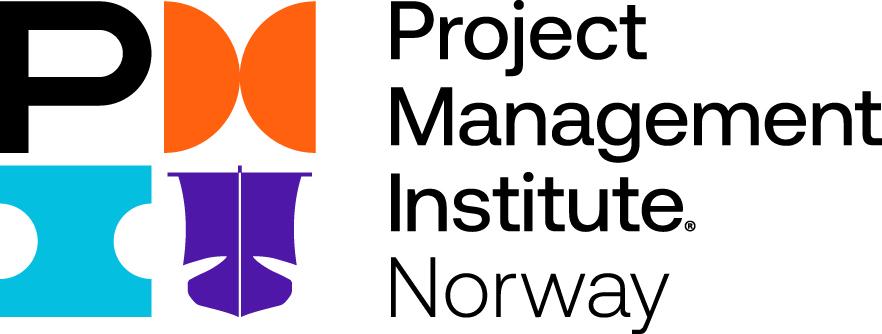May 15 2025 at 04:00PM
Balancing Flexibility and Intentionality: A Strategic Approach to Digital Transformation
Digital transformation initiatives continue to accelerate, driven by market disruption, innovation demands, and evolving customer expectations. Agile practices are often at the center of these efforts, valued for their speed, adaptability, and customer-centric focus. Yet, when applied at an enterprise level, agility must be balanced with intentionality—particularly in IT strategy and architecture.
When Agile Alone Isn't Enough
Agile promotes experimentation, quick feedback loops, and the freedom to pivot. For small-scale projects, this flexibility is ideal. However, at the enterprise level, not all decisions are created equal. Some choices—such as platform architecture, data governance models, and cybersecurity design—are difficult and costly to reverse. These are known as Type 1 decisions.
Other decisions, more tactical in nature, can be safely revised—these are Type 2 decisions. While Agile methods excel at managing Type 2 decisions, Type 1 decisions require a more structured, forward-thinking approach.
Intentional vs. Emergent Architecture
The Open Agile Architecture™ Standard (The Open Group, 2020) defines two key architectural approaches in Agile transformation:
- Intentional Architecture: A set of deliberate, strategic decisions that guide the future state, ensuring continuity, scalability, and long-term viability.
- Emergent Architecture: Evolving design patterns that arise from team-level experimentation and iteration.
Both are necessary—but CIOs and enterprise architects must recognize when to prioritize intentional over emergent design, especially for decisions that impact enterprise-wide platforms and integrations.
Defining the Big Decisions First
For a digital transformation strategy to succeed, it must begin by identifying the hard-to-reverse decisions that shape enterprise systems. These foundational choices form the core of the IT strategy and digital roadmap. Delaying them too long or making them reactively can lead to fragmented systems and poor alignment with business goals.
This doesn’t mean rushing into premature commitments. Instead, organizations should adopt the principle of the last responsible moment—making critical decisions only when necessary, but not later.

The Strategic Role of Business Analysis
Business analysis plays a pivotal role in bridging business needs and technical solutions. The PMI Professional in Business Analysis (PMI-PBA®) framework emphasizes practices such as stakeholder engagement, decision modeling, and requirements prioritization—all essential for aligning solutions with strategic objectives (PMI, 2015; 2024).
Business analysts are not merely requirements gatherers—they are strategic change agents. By working closely with CIOs and project managers, business analysts help organizations assess the implications of Type 1 decisions, identify stakeholder value, and ensure that digital transformation delivers measurable outcomes.
Disciplined Agile®: Tailoring the Way of Working
The Disciplined Agile® (DA) toolkit, as outlined in Choose Your WoW! (Ambler & Lines, 2020, 2022), offers a practical approach to agility at scale. Rather than enforcing a one-size-fits-all framework, DA encourages organizations to select their way of working (WoW) based on their context, governance requirements, and team maturity.
This adaptability is particularly useful in large-scale transformations, where different teams face different constraints. Disciplined Agile supports CIOs and transformation leaders in balancing agility with discipline—empowering teams while maintaining enterprise alignment.
Architecture-Led Agility
Enterprise architects play a crucial role in making digital transformation sustainable. According to McKinsey (Bossert & Van der Wildt, 2021), transformations that lack architectural leadership tend to result in high technical debt and limited reusability.
Conversely, when architecture is embedded early in digital initiatives, organizations build scalable platforms that support long-term growth.
The Scaled Agile Framework (SAFe) reinforces this principle by promoting a balance between emergent design and intentional architecture, ensuring that innovation at the team level aligns with enterprise strategy.
Books like Designed for Digital (Ross et al., 2019) further emphasize that successful digital businesses are built on two critical architectural foundations: an operational backbone (standardized processes and systems) and a digital platform (for rapid innovation). Intentional design enables this foundation without sacrificing flexibility.
CIOs as Strategic Change Leaders
The CIO’s role has evolved from IT operations to enterprise transformation leadership. According to Foundry’s 2024 State of the CIO report, 87% of CIOs are now leading or co-leading digital initiatives. Their visibility across business units makes them well-positioned to connect technology decisions with business priorities.
Effective CIOs promote agile delivery, sponsor architecture-led transformation, and enable business analysts and cross-functional teams to drive innovation with guardrails. They ensure that strategic goals are not lost in the pursuit of speed.

Final Thought: Agility with Direction
Digital transformation is not just about moving fast—it’s about moving smart. By distinguishing between flexible and foundational decisions, and by combining agile thinking with intentional architecture, organizations can avoid the chaos of unchecked experimentation.
The integration of frameworks like PMI-PBA, Disciplined Agile, and Open Agile Architecture gives CIOs and transformation leaders a powerful combination of adaptability and strategic control. This approach ensures not only speed but also sustainability and coherence across the digital enterprise.
About the Author
Ali Kohansal is PMO Lead at Antire AS and Volunteer Engagement Director at PMI Norway Chapter. He holds a PhD in Information Systems from NTNU and specializes in IT strategy, enterprise architecture, and digital transformation. Ali supports organizations in making
informed IT investment decisions and developing actionable digital roadmaps by combining agile governance, business analysis, and architectural thinking. Connect with him on LinkedIn.
References
- Ambler, S. W., & Lines, M. (2020). Choose Your WoW!: A Disciplined Agile Delivery Handbook for Optimizing Your Way of Working. Project Management Institute.
- Ambler, S. W., & Lines, M. (2022). Choose Your WoW! (2nd ed.): A Disciplined Agile Approach to Optimizing Your Way of Working. Project Management Institute.
- Bossert, O., & Van der Wildt, N. (2021). How enterprise architects need to evolve to survive in a digital world. McKinsey & Company.
- Clark, T. (2024). The Role of Business Analysis in Digital Transformation. 365 Retail. Link
- Project Management Institute. (2015). Business Analysis for Practitioners: A Practice Guide. PMI.
- Project Management Institute. (2024). Business Analysis for Practitioners: A Practice Guide (2nd ed.). PMI.
- Ross, J. W., Beath, C. M., & Mocker, M. (2019). Designed for Digital: How to Architect Your Business for Sustained Success. MIT Press.
- Samuels, M. (2024). CIOs are stretched more than ever before – and that’s a good thing. CIO.com. Link
- Scaled Agile, Inc. (2021). Agile Architecture. In Scaled Agile Framework 5.0. Link · The Open Group. (2020). Open Agile Architecture™ Standard, Version 1.0.



